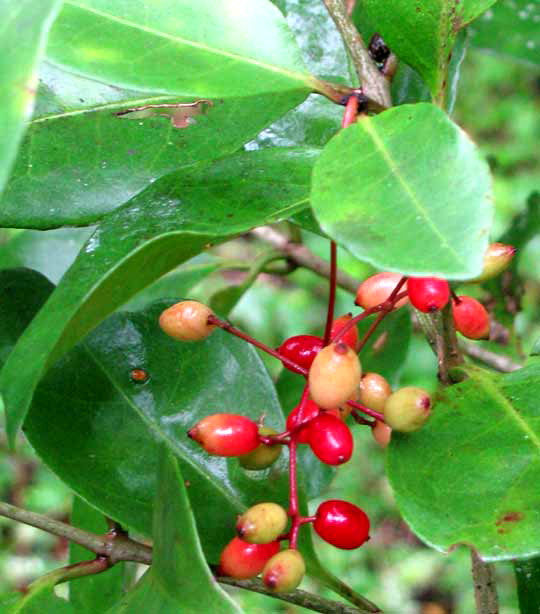Excerpts from Jim Conrad's
Naturalist Newsletter
from the November 21, 2010 Newsletter issued from Hacienda Chichen Resort beside Chichén Itzá Ruins, central Yucatán, MÉXICO; limestone bedrock, elevation ~39m (~128ft), ~N18.52°, ~W95.15°
NEEA
If you drive or ride a bus all through lowland tropical Mexico, Central America and even South America, watching vegetation along the roads, you'll be surprised how often the same species appear again and again. They're weeds adapted to very disturbed and unstable environments, and of course such habitats are too common everywhere, so the weeds that inhabit them also are widely distributed. And those weeds have taken the places of much rarer species that are more narrowly adapted to the more natural conditions that used to be there.
Happily, sometimes if such abused areas are let alone awhile, the former species return, if they haven't been completely extirpated from the area. The farther I bike from Pisté, and the deeper I hike into the forest away from the Hacienda, the more likely I am to encounter species I've never seen before, species more adapted to the mature forest that used to be here. A look at one such mature-forest species is shown below:

That ten-ft-tall (3m) bush is a member of the genus Neea, NEEA PSYCHOTRIOIDES, a member of the Four-O'Clock or Bougainvillea Family, the Nyctaginaceae. If you Google looking for pictures of it you won't have much luck, since not much is known.
Field marks cueing us that it's a Neea include its opposite, leathery leaves, the long-pedicled fruits, and the tips of the fruits, which display thickened, dark rings beneath their tiny points. Features indicating that this is the species psychotrioides include the fact that the panicle is longer than the leaves and dangles on a long, slender stem, or peduncle.
Neea psychotrioides is distributed from southern Mexico south to northern South America
This is the kind of species you like to run into, not only because it's something new and pretty, but also because it's an indicator of an ecosystem gradually healing itself, which our forest is doing, having once been ranchland.